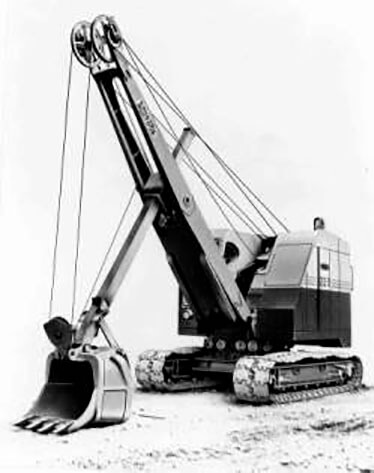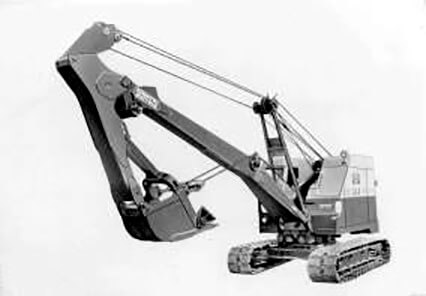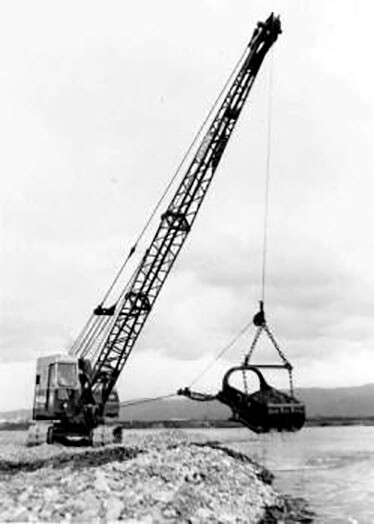1960
Liberalization of trade brought Japan demand from abroad and the opportunity to raise Japan's technological advancements to a world-class level. The introduction of large-scale power sources took place, which accelerated development of larger equipment.

Mechanical excavators were being developed mainly in the United States back then. Japan started importing the products of Bucyrus during the Taisho era (1912-1926).
During the 1950's after World War II, their large models were used for building dams and gained a good reputation in the construction industry.
Komatsu entered into a technical partnership with Bucyrus and produced the 22B. Prior to that, Hitachi, Yutani, Nippon Sharyo, Kobe Steel and IHI Construction Machinery were manufacturing mechanical excavators, but it was only Mitsubishi Heavy Industries who was producing Hydraulic excavators.
Dosing Shovel Type - Weight: 22000kg, Dipper capacity: 0.6m3

Backhoe Type - Weight: 23110kg, Dipper capacity: 0.6m3
Guideline for "winding up speed" for Wire Type is 18m/minute.

Dragline Type - Weight: 20970kg, Bucket capacity: 0.6m3, Winding up speed: 53.9m/minute.
Hydraulic excavator
Since its first emergence in 1951, it took only 50 years for the hydraulic shovel to establish its primary position on construction sites worldwide. Its size ranges from mini to super size depending on the scale of construction, and during the half century, it kept evolving by achieving a minimum rear-swing radius and adapting styles that would work with characteristics of each site. Mirroring the movement of a human hand, a hydraulic shovel will continue to evolve during the 21st century.